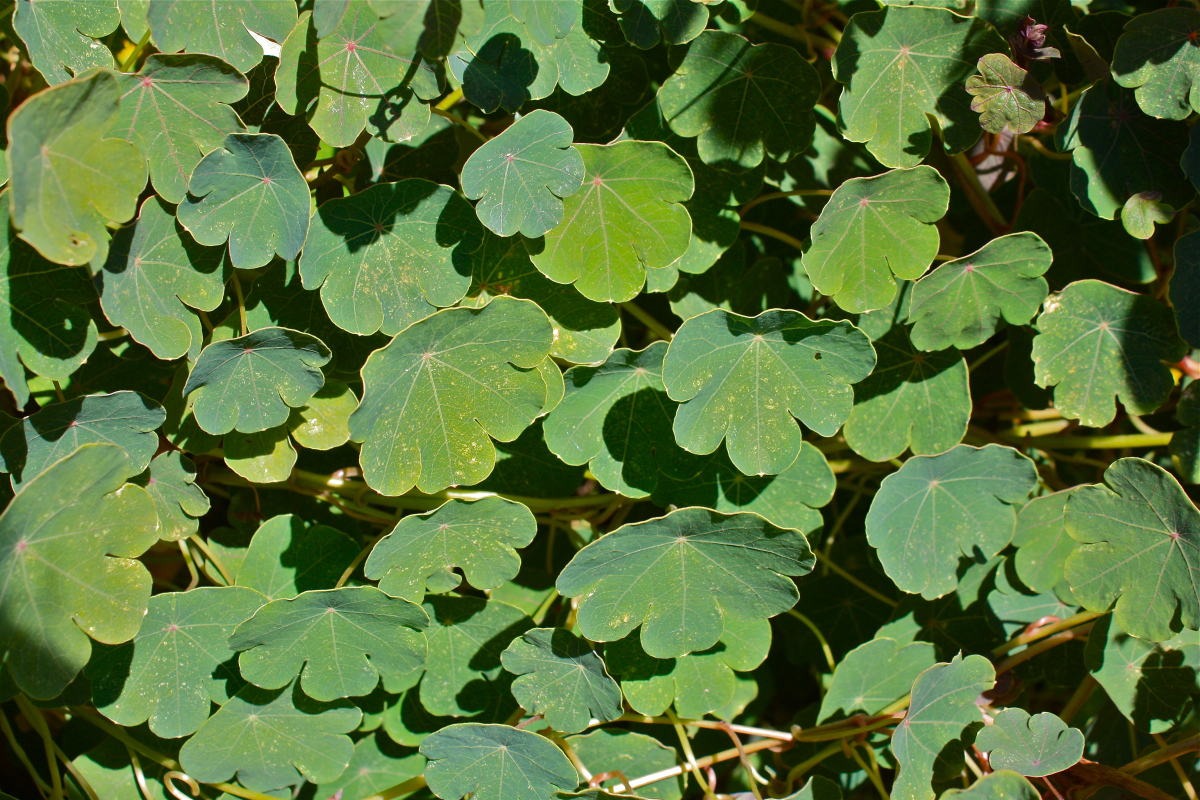OVERVIEW, ORIGIN, AND DISTRIBUTION
Closely related to the common nasturtium, T. tuberosum is a perennial plant domesticated and traditionally grown in the Peruvian and Bolivian Andes Mountains of South America. The plant is a creeper with fleshy stems and orange-red flowers similar to those of nasturtium. The plant is a creeper with fleshy stems and orange-red flowers.
It was cultivated centuries before European Colonization for the edible root / tuber. Europeans brought the plant back home where it has since been propagated and selected for its ornamental traits. The tuber nasturtium is practically unknown outside of South America where it is still grown as a staple food in many high altitude areas where few other crops will grow
USES AND ETHNOBOTANY
The edible roots are white with purple spots, not dissimilar to the form of some potatoes. Traditionally the roots are not eaten fresh but are dried and eaten like potatoes. Pickled tubers have been used in Europe to garnish hors d’oeuvres and cold meats. Leaves are added to salads for their spicy taste and attractive colors. Young seeds and unopened flowers are pickled with tarragon and used as a substitute for capers.
